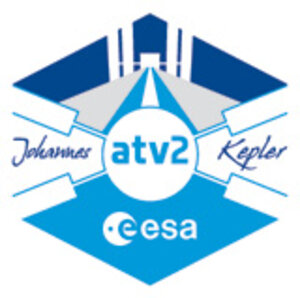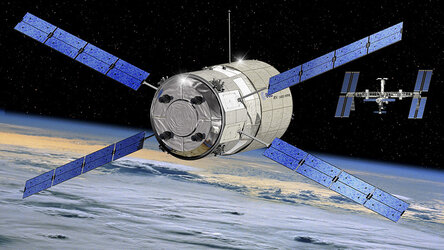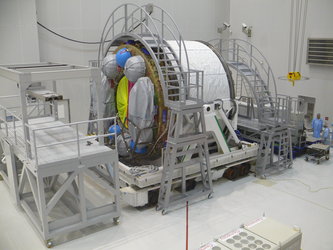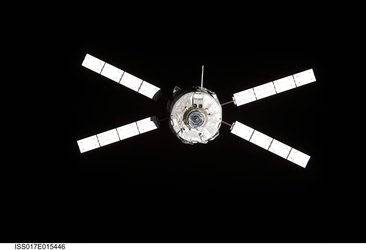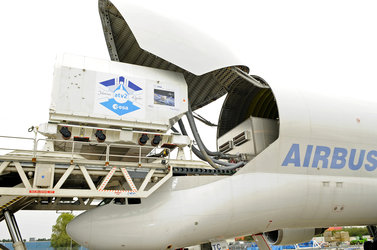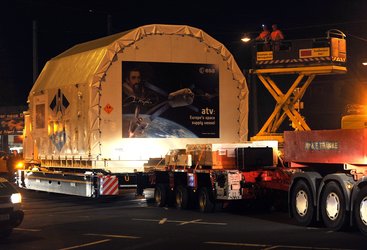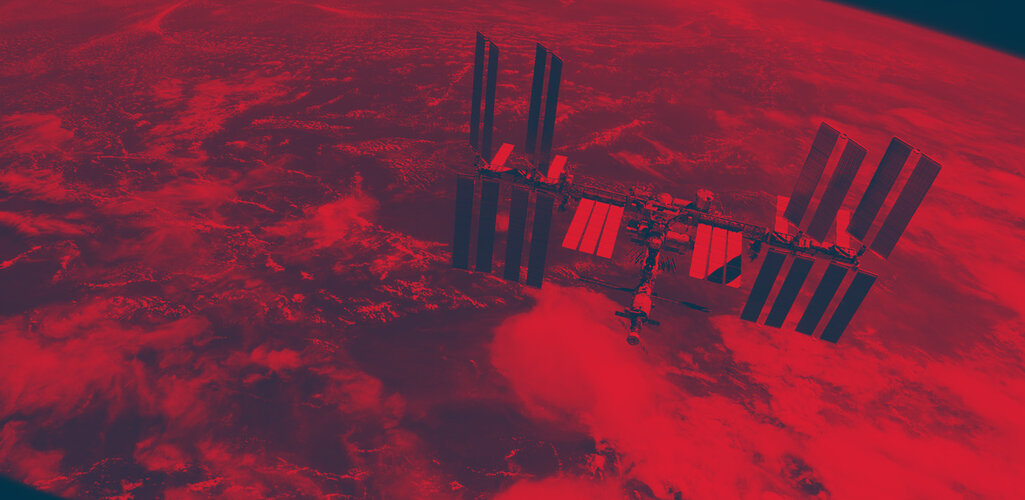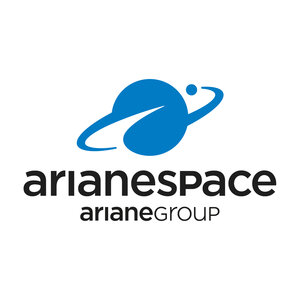Europe’s ATV Johannes Kepler supply ship on its way to Space Station
ESA PR 07-2011 - ESA’s second Automated Transfer Vehicle, Johannes Kepler, has been launched into its targeted low orbit by an Ariane 5. The unmanned supply ship is planned to deliver critical supplies and reboost the International Space Station during its almost four-month mission.
The Ariane 5 lifted off from Europe’s Spaceport in Kourou, French Guiana, at 21:50 GMT (18:50 local) on Wednesday 16 February.

The launcher and its 20.06-tonne payload flew over the Atlantic towards the Azores and Europe. An initial 8-minute burn of the upper stage injected it, with Johannes Kepler, into a low orbit inclined at 51.6 degrees to the equator.
After a 42-minute coast, the upper stage reignited for 30 seconds to circularise the orbit at an altitude of 260 km. About 64 minutes into flight, the unmanned supply ship separated safely from the spent upper stage.
The Automated Transfer Vehicle (ATV) deployed its four solar wings soon after and will proceed with early orbit operations over the coming hours to begin its climb to the International Space Station (ISS).

“This launch takes place in a crowded and changing manifest for the ISS access, with HTV, Progress, ATV and the Shuttle coming and going. In October last year we had fixed the ATV launch schedule with our international partners,” said Jean-Jacques Dordain, ESA’s Director General, “and we could keep that schedule thanks to the expertise and dedication of the European industry and Arianespace, of ESA and CNES teams and of our international partners. ATV-2 is the first of a production of four and this new step is the result of technical expertise and political support from Member States to ESA and to international cooperation. We are now looking for the docking to ISS to declare success.”
“ATV Johannes Kepler is inaugurating our regular service line to the ISS,” added Simonetta Di Pippo, ESA’s Director for Human Spaceflight.
For the first time, ESA used a special access device to load last-minute cargo items. “This late access confirms ATV’s role as a critical resupply vehicle for the Space Station,” she said.

“Right now, integration for the next vehicle in line, Edoardo Amaldi, will be finished in Europe in August 2011, and production is under way for ATV-4 and -5.” Mrs Di Pippo confirmed that “Edoardo Amaldi is planned for launch in about 12 months. The other two will follow by 2014.”
Flying in the same orbital plane as the Station but well below its 350 km-high orbit, ATV is being constantly monitored by the dedicated ESA/CNES ATV Control Centre (ATV-CC) in Toulouse, France, in coordination with the ISS control centres in Moscow and Houston.
During the coming week, ATV will adjust its orbit to rendezvous with the ISS for docking on Thursday, 24 February.
Europe’s smart supply ship
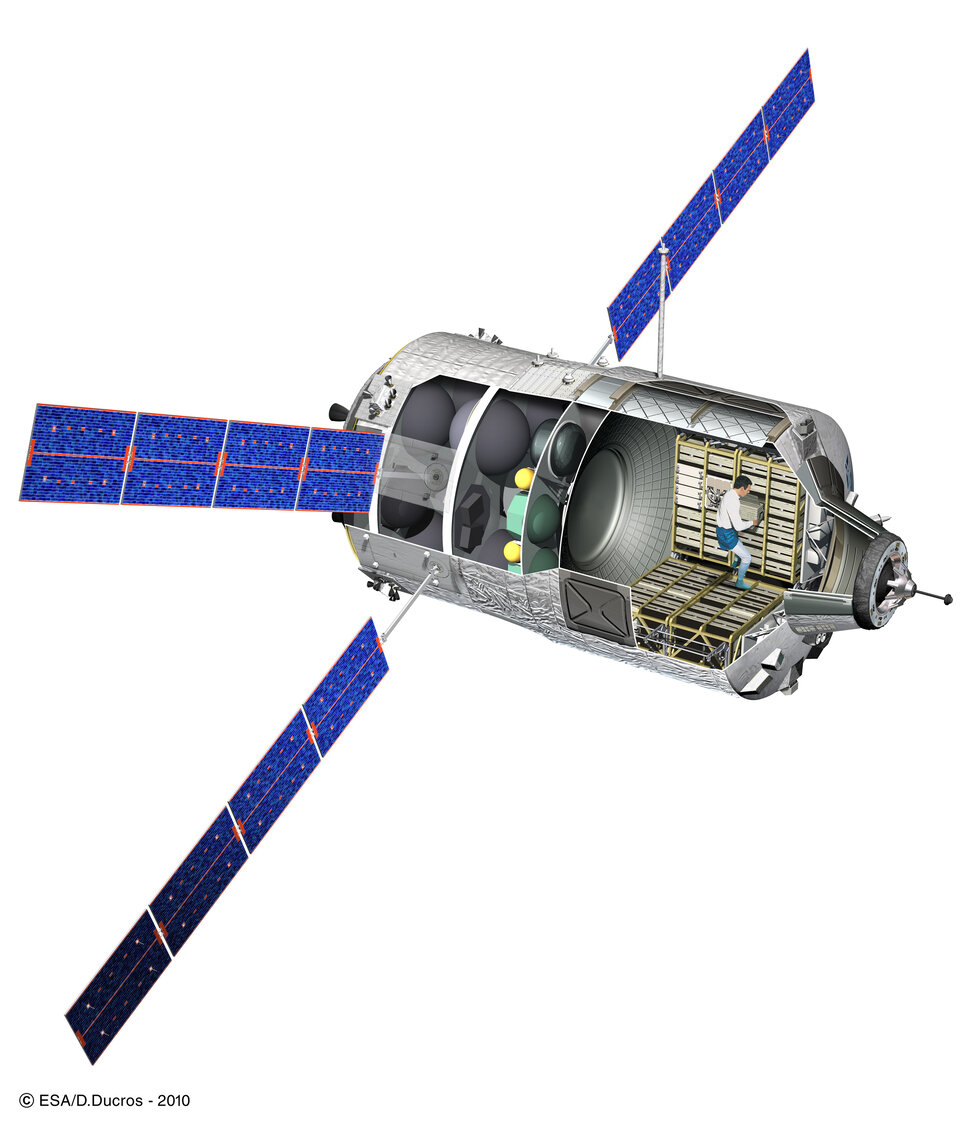
Unlike its 2008 predecessor, ATV Jules Verne, ATV Johannes Kepler will not perform practice demonstration manoeuvres. Instead, it will dock directly and autonomously with Russia’s Zvezda module to deliver cargo, propellant and oxygen to the orbital outpost.
The ATVs are contributing to the support and maintenance of the ISS together with Russia’s Progress and Japan’s H-II Transfer Vehicle, the second of which is now docked to the European-built Node-2.
These three independent servicing systems provide a secure logistics lifeline, while NASA’s Space Shuttle is going to be phased out later this year.
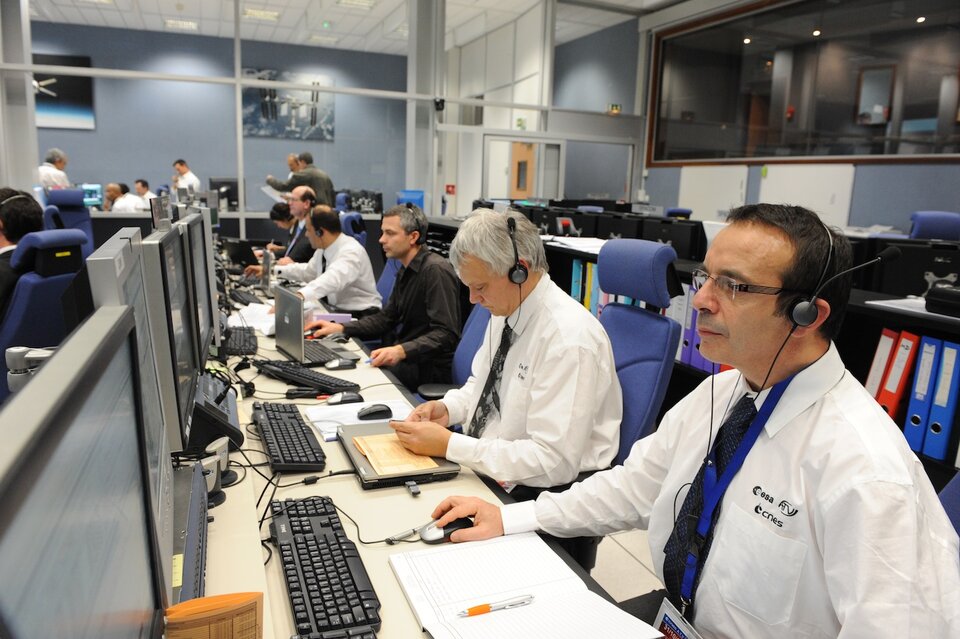
This launch also marks the 200th flight of an Ariane vehicle since the debut of 24 December 1979. The total includes 116 flights of Ariane 4 from 1988 to 2003 and 56 flights of Ariane 5 from 1996.
Now in its fourth decade of service, Europe’s family of launchers has lofted some 330 payloads to Earth orbit and beyond. Among these, 31 were for ESA, including deep-space probes, astronomical observatories, meteorology, remote sensing and communication satellites, as well as Space Station resupply ships.
For further information, please contact:
ESA Media Relations OfficeCommunication Department
Tel: +33 1 53 69 72 99
Fax: +33 1 53 69 76 90
Email: media@esa.int















 Germany
Germany
 Austria
Austria
 Belgium
Belgium
 Denmark
Denmark
 Spain
Spain
 Estonia
Estonia
 Finland
Finland
 France
France
 Greece
Greece
 Hungary
Hungary
 Ireland
Ireland
 Italy
Italy
 Luxembourg
Luxembourg
 Norway
Norway
 The Netherlands
The Netherlands
 Poland
Poland
 Portugal
Portugal
 Czechia
Czechia
 Romania
Romania
 United Kingdom
United Kingdom
 Slovenia
Slovenia
 Sweden
Sweden
 Switzerland
Switzerland

























